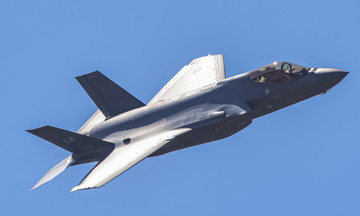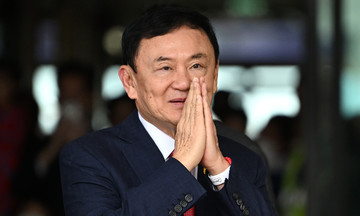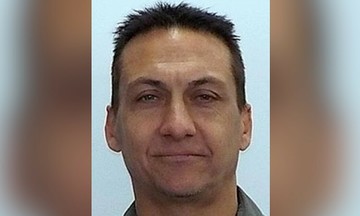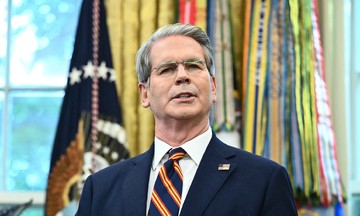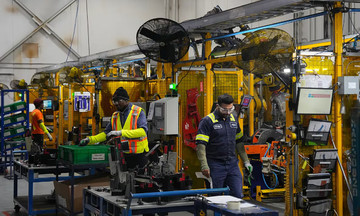It began with a touch of gilding in the Oval Office. Then, the ceiling, mirror frames, and portraits were progressively gilded, filling the last empty spaces on the walls of the iconic White House room.
The Cabinet Room also received 24-karat gold accents, while two enormous flagpoles were erected on the North and South Lawns. The famous Rose Garden, once known for its lush green lawn, is now paved with stone and furnished with white tables, chairs, and umbrellas. A $200 million ballroom is slated to begin construction in the fall and is expected to dramatically alter the East Wing.
A month ago, President Donald Trump demanded improvements to the Cabinet Room’s ceiling lighting, something that had never been done before. Trump’s cabinet meetings are often held in front of the press, primarily for public consumption. However, after expressing dissatisfaction with some of the footage from a meeting, he requested brighter lights for the room, according to an anonymous White House official.
This is just the beginning of Trump’s efforts to personalize iconic spaces in the U.S. capital during his second term. “He seems to wake up every day and ask himself, ‘What else needs improving?’ Every day there's a new idea,” a source said.
 |
U.S. President Donald Trump speaks in the newly gilded Oval Office at the White House on 2/9. _Photo: AP_ |
Trump is also deeply invested in his renovation ideas, sometimes leaving the Oval Office to chat with the Rose Garden construction crew, inspect the West Wing roof, or discuss his plans to "beautify" Washington during press conferences.
“I love construction. I understand it better than anyone,” Trump said in June while overseeing the installation of the new White House flagpoles, informing reporters that the foundations were 9 feet deep to ensure stability.
This week, the president announced that Washington would be "beautified within 12 months."
According to two sources, he wants the projects completed in time for the 250th anniversary of the nation's founding next summer. The renovation plan is expected to focus on restoring fountains throughout the city, from Lafayette Square in front of the White House's north gate to the Columbus Fountain at Union Station, along with several structures along the National Mall.
“He really cares about the fountains,” one source said.
Many of Washington's fountains have been out of commission for years due to lack of funding and maintenance.
“The president is passionate about building, and he has brought that energy to our nation’s capital. He is restoring American glory everywhere he touches, from the White House to federal buildings and capital parks, fulfilling his promise of a new golden era for America,” said White House spokesperson Davis Ingle.
Last week, while speaking in the Oval Office about deploying federal troops to protect the capital, Trump repeatedly digressed, primarily to discuss his plan to use $2 billion in federal funds to beautify the capital.
This plan began with the renovation of the Kennedy Center earlier this year, with the idea of laying a new marble floor and renovating the I-beams surrounding the building.
“I think the I-beams should be covered with a beautiful stone like marble. It’s not an outdoor material, but it looks better than granite. We’re going to do that,” he said while visiting the site in March. In early August, Trump also visited to inspect the materials and announced that the 2026 World Cup draw would be held at the center.
According to two anonymous sources, Trump also plans to transform the East Potomac Golf Links on the banks of the Potomac River into the "Washington National Golf Course." He has also expressed a desire to repaint the Eisenhower Executive Office Building west of the White House from gray to white to match the overall landscape.
“Everything he does or intends to do has a rationale,” a White House official said, adding that the president is not using taxpayer money for any of the projects.
The Rose Garden paving and ballroom projects are both funded by private donations overseen by Meredith O'Rourke, the chief financial officer of Trump's 2024 campaign.
Under federal law, U.S. presidents have the freedom to decorate the White House. In 1927, the attic was converted into a third floor. President Harry S. Truman added the South Portico in 1947, a year before he moved to Blair House for a complete White House reconstruction. However, observers say no U.S. president has focused as much on aesthetics as Trump.
“Changes and rearrangements to the White House are always ongoing. However, this is probably the first time so many changes have happened at once. He is personally involved in this work. He's very practical, and I think that stems in part from his experience as a real estate developer and his interest in construction,” said Stewart McLaurin, president of the White House Historical Association.
 |
A corner of the Rose Garden at the White House on 2/9. _Photo: AP_ |
However, some experts believe the changes in the Oval Office serve no purpose other than Trump’s personal taste. “The gilding of the Oval Office seems intended to create a royal setting,” said Daniel Abramson, a professor of American and European architecture at Boston University.
“He always wants to project luxury and class,” said Barbara Res, an architect who oversaw the construction of Trump Tower in the early 1980s.
Last week, the president issued an executive order, "Making Federal Architecture Beautiful Again," declaring "classical and traditional" architecture as the government's preferred style. This order is similar to a request he made during his first term, wanting all federal buildings in Washington built in the Greek or Roman style.
Some observers say Trump’s desire to renovate America’s iconic government buildings suggests he wants to leave his mark on Washington for years to come.
“He’s really thinking about his legacy. He wants to leave things lasting and make things better than they were before,” a White House official said.
Thuy Lam (_After Politico_)






